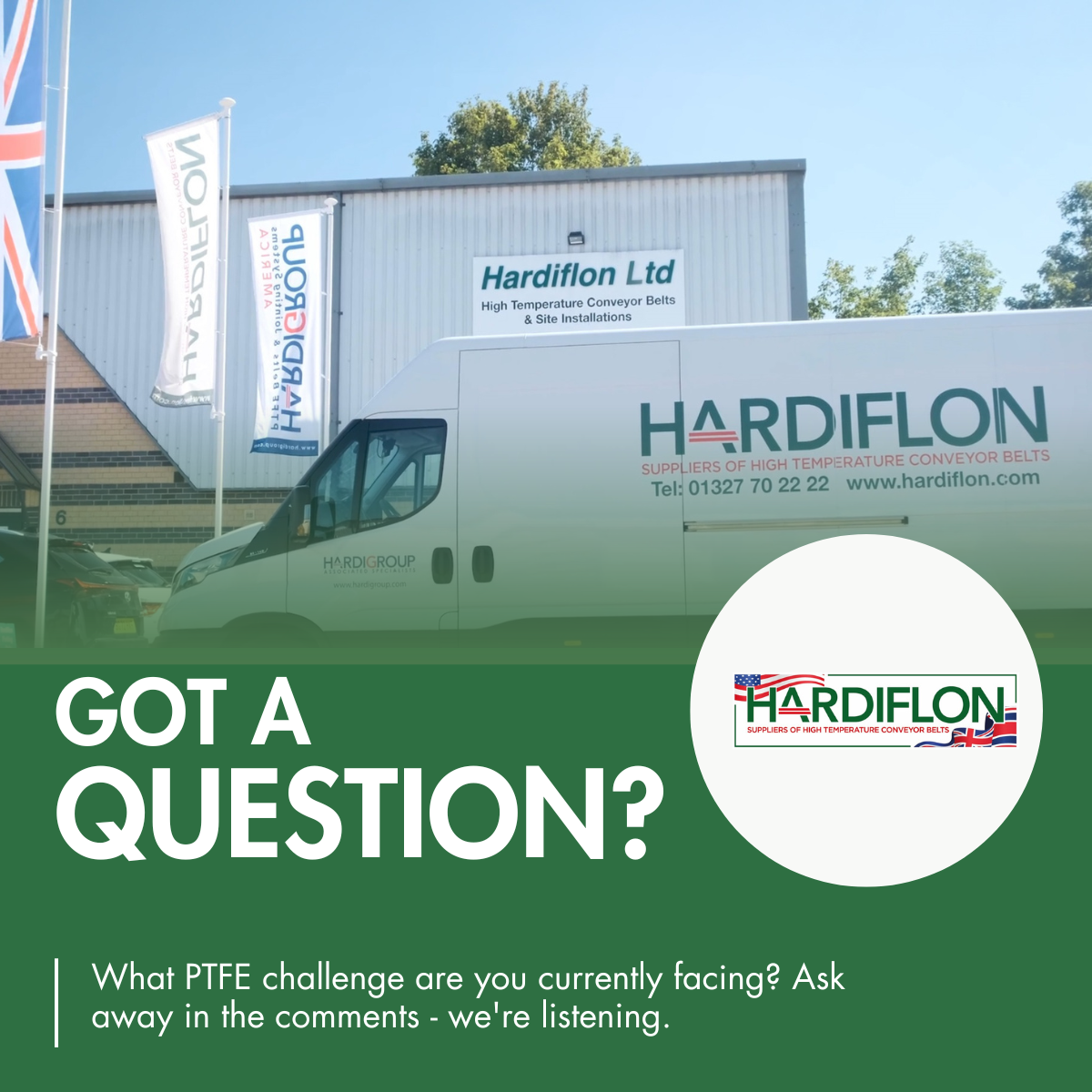When it comes to conveyor belts, the temptation to choose the lowest-priced option can be overwhelming, especially when managing tight budgets. However, what appears to be a cost-saving decision upfront often leads to significantly higher expenses down the line. At Hardiflon, we've seen countless businesses learn this lesson the hard way, which is why we're committed to helping you understand the true cost of cheap conveyor belts.



The Initial Savings Illusion
Cheap conveyor belts might look attractive on paper, offering substantial savings compared to premium alternatives. However, this initial cost advantage quickly evaporates when you factor in the hidden expenses that inevitably follow. The old adage "buy cheap, buy twice" has never been more relevant than in the world of industrial conveyor systems.
Hidden Cost #1: Frequent Replacement and Downtime
Low-quality conveyor belts typically have shorter lifespans due to inferior materials and manufacturing processes. What seems like a bargain today becomes an expensive cycle of replacements within months rather than years.
The Real Impact:
• Production downtime during emergency replacements
• Lost revenue during unplanned maintenance windows
• Increased labour costs for frequent installations
• Emergency shipping costs for rush replacement orders
A food processing facility we worked with discovered their cheap belts needed replacing every 2 months, compared to our high-quality alternatives that lasted 1 year. The accumulated downtime costs alone exceeded their initial "savings" within the first year.
Hidden Cost #2: Increased Maintenance Requirements
Inferior conveyor belts require more frequent maintenance, adjustments, and repairs. Poor-quality materials are more susceptible to stretching, cracking, and wearing unevenly, leading to constant attention from your maintenance team.
Additional Maintenance Costs Include:
• Increased labour hours for adjustments and repairs
• Higher consumption of maintenance supplies
• More frequent professional service calls
• Increased risk of damage to other system components
Hidden Cost #3: Reduced Operational Efficiency
Cheap conveyor belts often struggle to maintain consistent performance, leading to:
• Slower production speeds to accommodate belt limitations
• Increased product waste due to belt slippage or misalignment
• Higher energy consumption from inefficient belt operation
• Quality control issues affecting end-product standards
A textile manufacturer found that their cheap belts couldn't maintain proper tension, resulting in 15% more fabric waste and slower production speeds that reduced their daily output by 200 units.
Hidden Cost #4: Safety and Compliance Issues
Low-quality belts pose increased safety risks that can result in:
• Workplace accidents leading to injury claims and insurance increases
• Regulatory compliance failures and associated fines
• Potential product contamination in food processing applications
Hidden Cost #5: Damage to Other Equipment
When conveyor belts fail, they don't fail in isolation. Poor-quality belts can cause:
• Premature wear on pulleys and rollers
• Motor strain and increased electrical consumption
• Damage to product handling equipment
• Misalignment issues affecting the entire conveyor system
Why Hardiflon Belts Deliver Superior Value
At Hardiflon, our conveyor belts are engineered for longevity and performance.
Superior Materials: We use only premium-grade materials that withstand industrial demands and maintain performance over time.
Precision Manufacturing: Our belts are manufactured to exact specifications, ensuring consistent performance and extended lifespan.
Application-Specific Design: We tailor our solutions to your specific operational requirements, maximizing efficiency and minimising wear.
Comprehensive Support: Our technical team provides ongoing support, helping you optimise performance and prevent costly issues.
Making the Smart Investment
When evaluating conveyor belt options, consider the total cost of ownership rather than just the initial purchase price. Factor in:
• Expected lifespan and replacement frequency
• Maintenance requirements and associated costs
• Potential downtime and its impact on productivity
• Safety considerations and compliance requirements
• Energy efficiency and operational performance
Expert Guidance for Your Application
Every industrial application has unique requirements, and choosing the right conveyor belt requires expertise and experience. Our team at Hardiflon works closely with clients to understand their specific needs and recommend solutions that deliver optimal performance and value.
Whether you're operating in food processing, textile manufacturing, packaging, or any other industrial sector, we have the knowledge and products to help you avoid the hidden costs of cheap alternatives.
Conclusion
The decision to invest in quality conveyor belts isn't just about avoiding problems – it's about optimising your entire operation for long-term success. While cheap belts might seem appealing initially, the hidden costs quickly add up, making them one of the most expensive mistakes you can make.
At Hardiflon, we're committed to helping you make informed decisions that protect your bottom line and ensure smooth, efficient operations. Don't let short-term savings lead to long-term expenses. Contact our team today to discuss how our premium conveyor belt solutions can deliver superior value for your operation.
Ready to make the smart investment? Contact Hardiflon today for expert advice on conveyor belt solutions that deliver true value. Our experienced team is here to help you avoid the hidden costs of cheap alternatives and optimise your industrial operations for long-term success.


